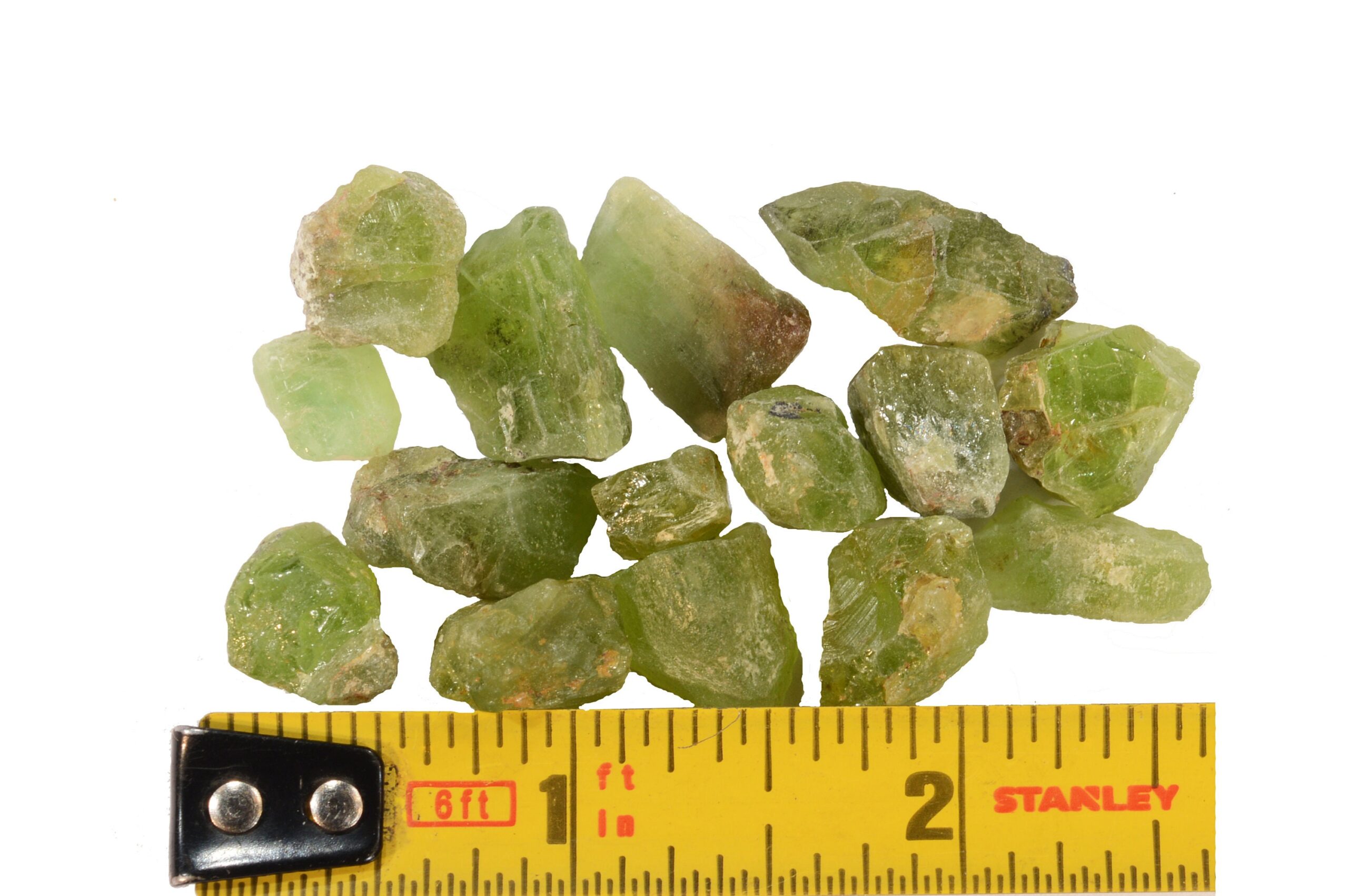PERIDOT Crystal 1/2″ 1 Ounce Bag Top Grade Pakistan Rock Mineral Heart Chakra Crystal Stone Natural Specimen Reiki
$19.99
In stock
Description
These deep green high quality peridot crystal are imported by Kidz Rocks from the Spat Mine, Mansihra, Pakistan. The largest peridot crystals come from Pakistan and are truly beautiful.
You will receive a one ounce bag of peridot crystals that are 1/4 inch to 3/4 inch.
Bulk Purchase Listing
You are buying a one ounce bag of crystals from the lot shown in the photographs. Listing every rock separately adds a lot in labor costs. We pass that savings on to you with lower prices and higher quality than the competition. 75% of all of our Reviews are from customers amazed by what they received buying our bulk purchase listing products!
Kidz Rocks – The Best Value on the Internet!
Higher quality, larger size, lower price genuine natural rocks and minerals with customer service second to none. Buy ANY 5 or more items and get 30% off your entire order and a FREE surprise specimen! Maximum $8.75 shipping no matter how many items are on your order and no return required refunds!
Mineral Description
Peridot is the gem variety of the mineral olivine. The name ‘peridot’ was derived from the Arabic word for gem – ‘faridat’. It is sometimes referred to as ‘the poor man’s emerald’ or as ‘chrysolite’, a word derived from the Greek word ‘goldstone’. Its chemical composition includes iron and magnesium, and iron is the cause of its attractive yellowish green colors. Gem miners find peridot as irregular nodules in some lava flows in the United States, China, and Vietnam and, very rarely, as large crystals lining veins or pockets in certain types of solidified molten rock.
The color range for peridot is narrow, from a brown-green color to yellowish green to pure green. Peridot is one of the few gemstones available that can be found only in one color, although the shades of green may vary from light yellowish to dark brownish-green. The intensity of color depends on the amount of iron present in a Peridot’s chemical structure; the more iron it contains the deeper green it will be.
The ancient Romans called it ‘evening emerald’ since its color did not darken at night, but could still be appreciated by candlelight and the light of a campfire. It is a gem especially connected with ancient Egypt, and some historians believe that the famous emeralds of Cleopatra were actually peridot gems. Peridot was also brought back to Europe by the Crusaders and was often used to decorate medieval churches. In ancient beliefs, peridot was a gift of Mother Nature to celebrate the annual creation of a new world.
About Kidz Rocks
Since 2009, Kidz Rocks, a USA company, is “The Best Value on the Internet” providing higher quality, larger size and lower price rocks, minerals and crystals with customer service second to none.
Kidz Rocks Promise:
We are committed to redefine what it means to shop for rocks and minerals online. NO insane high prices, NO great piece one time and then a disappointing piece next time, NO rocks that look big online and then a tiny piece shows up, NO waiting a long time for shipping …
A partnership that you can trust and count on with each and every order that you will be pleased if not amazed when you open your package! Always high quality – Always larger sizes at lower prices that other dealers ƒ?? Always a positive and fun shopping experience.
If it is not a specimen we would add to our own personal collection, we don’t ship it out to you! When you buy from us you will be satisfied with each and every purchase or your money back and you keep the rocks!
Please feel free to call us at 1-818-518-6278 10 AM to 10 PM 7 days a week for wholesale discounts and special requests, we can get pretty much any rock on the planet. We ship all orders USPS, weekday orders ship the same day they are placed, weekend orders ship on Monday’s. We disclose any treatments done to the rocks after they are mined in our listing descriptions. If no treatments are stated then it is exactly as it came out of the ground.
Thanks,
Alan & Jaidon
Additional information
| Weight | 0.125 lbs |
|---|
2 reviews for PERIDOT Crystal 1/2″ 1 Ounce Bag Top Grade Pakistan Rock Mineral Heart Chakra Crystal Stone Natural Specimen Reiki
Only logged in customers who have purchased this product may leave a review.











Peter (verified owner) –
As described, shipped fast, packed well. AAA+++ customer service! Very happy with my order.
William (verified owner) –
Much smaller than the picture. I am a little disappointed